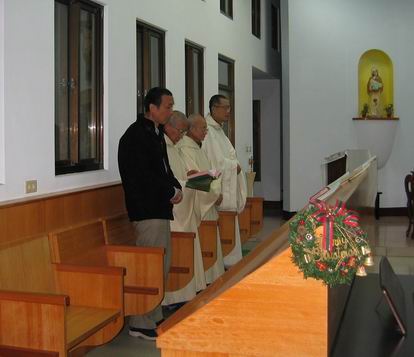|
The basis of formation in the Cistercian-Benedictine tradition is the Rule of St. Benedict. For persons who choose to adapt to a contemplative spirituality according to the Cistercian tradition, it is suggested that they become familiar with this Rule. In doing so, they may attain a general knowledge of Cistercian history and develop an understanding of Cistercian monastic spirituality. There are three major elements in our way of life. |
|
|
|
1. PrayerPrayer is essential for spiritual growth. Prayer must be valued as an expression of our relationship with God, a relationship that is nurtured by a transformed consciousness of the presence of God in our inner depths. 1.1. Eucharistic LiturgyMass is the center of our daily life. We listen to the Word of God and receive the Body and Blood of Christ in the Eucharist. Our daily Mass is not reserved solely for the monks but for everyone that wishes to prepare more attentively for the Lord¡¦s graces in their life. |
1.2 Liturgy of the HoursThe General Instruction on the Liturgy of the Hours, n. 12, says that, ¡§the praise and thanksgiving, the memorial of the mysteries of salvation, the petitions, and the foretaste of heavenly glory that are present in the Eucharistic mystery,¡¨ are extended throughout the day by those who pray the Liturgy of the Hours. The Liturgy of the Hours focuses the celebration on the mystery of Christ as present in every moment of time, modeling and encouraging that ceaseless prayer which must be the concomitant of lives caught up in that mystery. In our monastery, the schedule for the Liturgy of Hours is as follows: |
|
|
Vigils
3:45AM |
|

